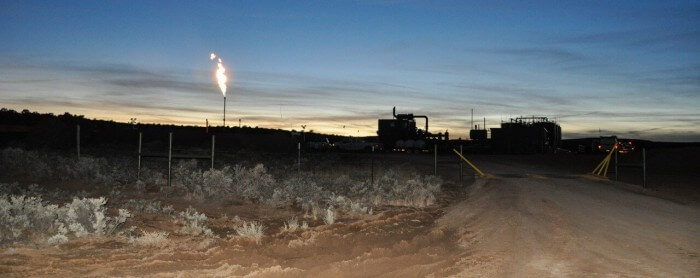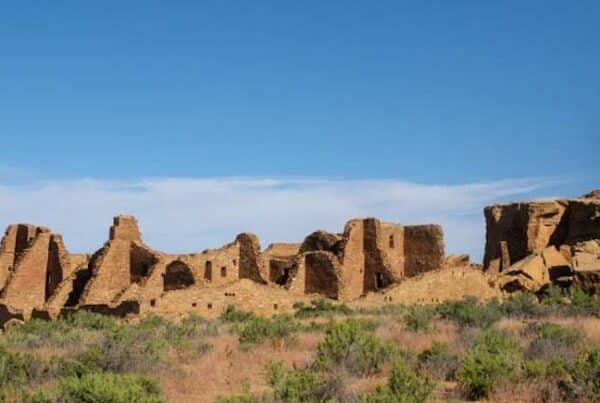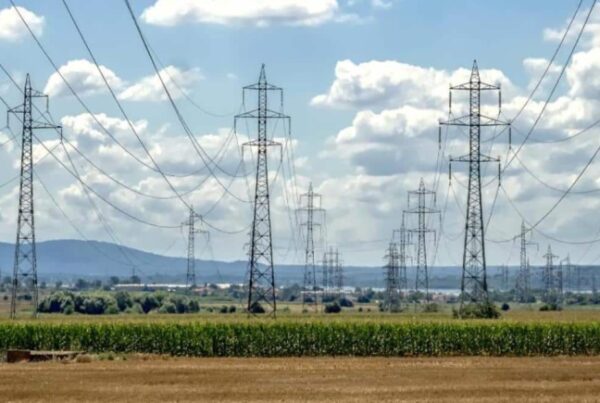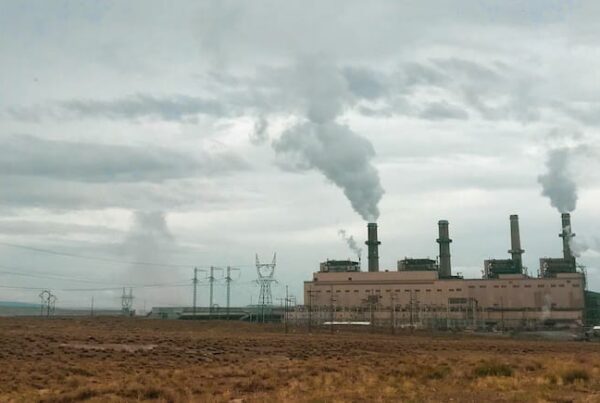By now I’m sure you’ve heard the news. The Four Corners region is the “methane hot spot” of the country. To help the public better understand the science behind this unfortunate designation, The Four Corners Public Science Forum on Methane (CH4), to be held on April 17 in Farmington, is being convened for community members to learn more about the scientific research on sources of methane in our community.
Why should you care?
According to the Intergovernmental Panel on Climate Change in 2013, methane is a major climate pollutant with a dramatically greater climate impact than carbon dioxide (CO2), with global warming potentials 86 times greater over a 20-year time span and 34 times greater over a 100-year time span.[1]
Why would the Four Corners be a hot spot for this dangerous gas? According to the scientists who discovered the hot spot – folks from such prestigious institutions such as the University of Michigan, NASA’s Jet Propulsion Laboratory, Los Alamos National Laboratory and California Institute of Technology – “The persistence of this CH4 signal from 2003 onward indicates that this source is likely from established gas, coal and coalbed methane mining and processing.”[2]
Even the Secretary of the Interior, Sally Jewell, has made the connection. Addressing the Center for Strategic and International Studies in March of this year, Secretary Jewell observed: “Methane is the third-largest source of greenhouse gas emissions and traps more than 20 times as much heat as carbon dioxide over the course of a century. But this powerful greenhouse gas is routinely released during energy development. In fact, above northern New Mexico, where there are more than 40,000 gas wells, satellite images show a methane gas plume the size of Delaware.”
According to the EPA, the Four Corners region is responsible for almost 10% of U.S. methane emissions from natural gas development.[3] Oil and gas accounted for nearly 90% of reported emissions in the San Juan Basin for 2013.[4]
What’s (not) being done
The public in the Four Corners has waited patiently for air quality problems to be legitimately addressed. In 2003, when the Bureau of Land Management in Farmington released a new planning document approving 10,000 new gas wells, the Four Corners Air Quality Task Force was created. In 2007, the Four Corners Air Quality Group released a Final Task Force Report identifying the wide range of known sources of emissions and identifying voluntary mitigation measures that could be implemented to reduce pollution.[5]
Since 2003, SJCA has participated in countless meetings and commented on numerous energy development projects, including oil and gas, coal bed methane, coal mines and coal plants, where air quality impacts were inadequately addressed. Analysis of air quality impacts by local federal agencies have never matched the level of concern expressed by Secretary Jewell, despite the fact that methane may be a more powerful greenhouse gas than the numbers she quoted.
Moving Forward
The time has come to take action on the methane problem in Four Corners, which is exacerbated by the massive carbon dioxide emissions from our coal plants, Four Corners Power Plant and San Juan Generating Station.
It is indefensible to not capture vented, leaking and fugitive methane emissions at oil and gas facilities as marketable product. It would increase efficiency and revenue while improving air quality, public health and the pock of indignity that being a ‘hotspot’of pollution entails. While industry touts our methane problem as “naturally occurring methane seeps,” evidence points towards massive amounts of preventable emissions from oil and gas development and facilities, many of which are on our public land, mandating response from the Department of the Interior.
The Four Corners Public Science Forum on Methane on April 17 gives the public an opportunity to understand the science and learn how local, state and federal agencies intend to take action based on the best available science.
[1] G. Myhre et al., Anthropogenic and Natural Radiative Forcing, in Climate Change 2013: The Physical Science Basis, Contribution of Working Group I, Fifth Assessment Report of the Intergovernmental Panel on Climate Change IPCC, Cambridge Univ. Press (2013) Table 8.7, 714
[2] Eric Kort et al., Four Corners: The largest US methane anomaly viewed from space, Geophysical Research Letters (2014)
[3] EPA, Inventory of U.S. Greenhouse Gas Emissions and Sinks: 1990–2012 (April 2014): https://www.epa.gov/climatechange/ghgemissions/usinventoryreport.html
[4] EPA Greenhouse Gas Reporting Program, available at: https://www.epa.gov/ghgreporting/
[5] https://www.nmenv.state.nm.us/aqb/4C/DraftTaskForceReport.html




